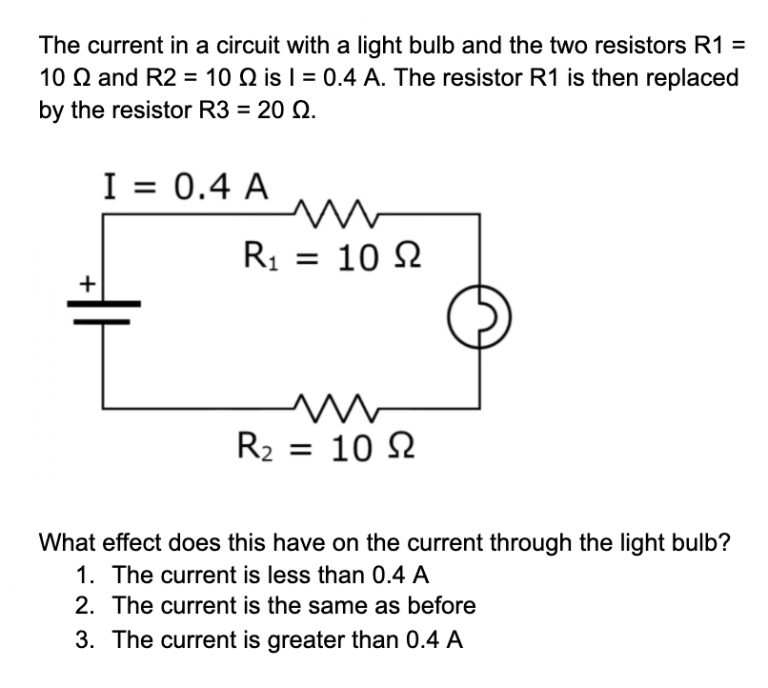AECCP Test on Simple Circuits (AECCP)
Purpose
The AECCP test assesses students’ qualitative understanding of simple electric circuits (e.g. the relationship between current and resistance). The two-tier structure of this diagnostic test instrument furthermore allows to analyze students’ alternative conceptions on simple circuits. Four additional items were added to the original test instrument to measure students’ understanding of potential differences.
Population
The AECCP test is commonly administered in high schools or in introductory college / university courses.
Typical Performance
In an empirical study conducted in Germany in 2018, the average pretest score of 17 high school classes was 24% and the average posttest score was 50%.
Validity
The original test instrument was developed at the Austrian Educational Competence Centre Physics at the University of Vienna. An analysis by Urban-Woldron & Hopf (2012) shows that the AECCP test meets a number of psychometric standards. More detailed information can be found in:
Urban-Woldron, H. & Hopf, M. (2012): Entwicklung eines Testinstruments zum Verständnis in der Elektrizitätslehre. In: Zeitschrift für die Didaktik der Naturwissenschaften 18, pp. 201–227. http://archiv.ipn.uni-kiel.de/zfdn/pdf/18_Urbahn.pdf
Research
See the validation section for related articles.
Example LASSO Report
Please follow this link to our example report for concept inventories.

